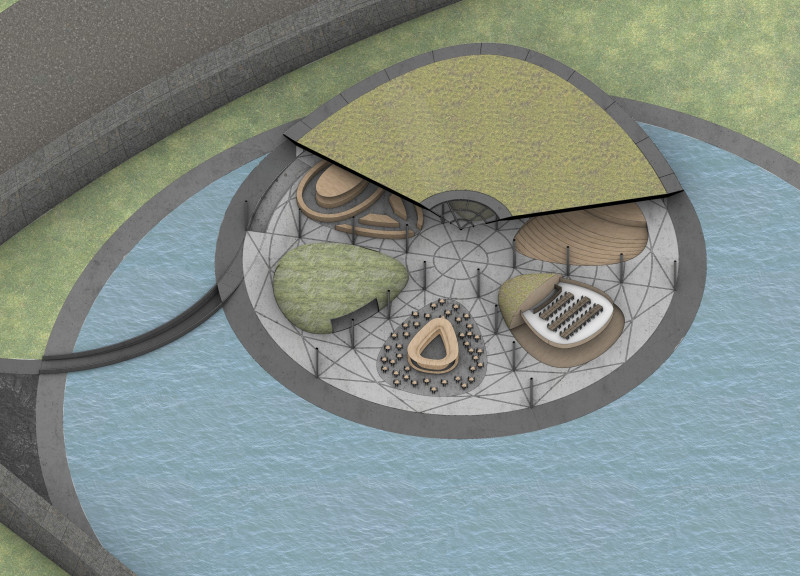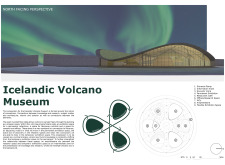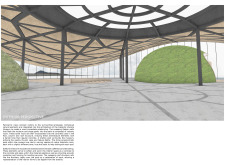5 key facts about this project
The Icelandic Volcano Museum is an architectural project designed to enhance public understanding of volcanic activity in Iceland. This museum aims to serve both educational and research purposes, establishing a direct relationship between its surroundings and the rich geological history of the region. The design integrates seamlessly with the landscape, emphasizing a connection between natural and built environments while fostering visitor engagement with the subject matter.
The museum features a rounded floor plate, facilitating fluid movement through various spaces, including exhibition zones, a research area, and visitor amenities such as cafés and restrooms. By organizing these functions into interconnected pods, the design promotes an immersive experience, allowing visitors to navigate seamlessly between diverse displays and activities focused on Iceland’s volcanic phenomena.
The exterior design incorporates gabion walls made of volcanic rock, which not only enhance the building’s aesthetic but also blend it into the natural topography, providing a protective barrier while forging a strong connection with the site. The use of concrete elements in the structure reinforces this integration, manifesting a sturdy yet harmonious design.
The museum's unique approach lies in its emphasis on sustainability and ecological relevance. The design incorporates large windows that frame views of the surrounding landscape, allowing natural light to penetrate the interior spaces and creating an ongoing dialogue between the exhibits and the outdoor environment. The smooth concrete flooring, combined with soft textures from the moss-covered pods, adds a tactile dimension that invites exploration.
In addition to its functional aspects, the design reflects a commitment to creating a serene visitor experience. Features such as a shallow water element enhance the sensory environment, enriching the approach to the museum while engaging visitors in a contemplative atmosphere.
The Icelandic Volcano Museum stands out due to its conceptual foundation of connectivity and interaction. By promoting a cyclical engagement with volcanic science, it becomes more than just a venue for static displays. The design allows for ongoing adaptability, ensuring that exhibits evolve as new research emerges. The modular organization of spaces is rooted in the project’s functional requirements while encouraging a holistic exploration of Iceland’s volcanic landscape.
For a comprehensive understanding of the design and its implications, readers are encouraged to explore architectural plans, sections, and other relevant documentation. Detailed insights into the architectural ideas and features of the project can reveal deeper layers of thought contributing to the museum's mission and its role within the community.





















































